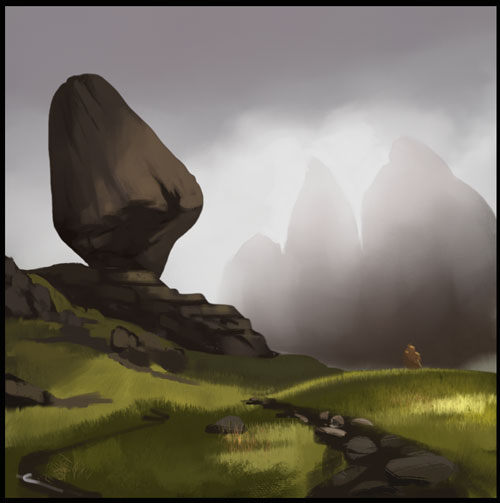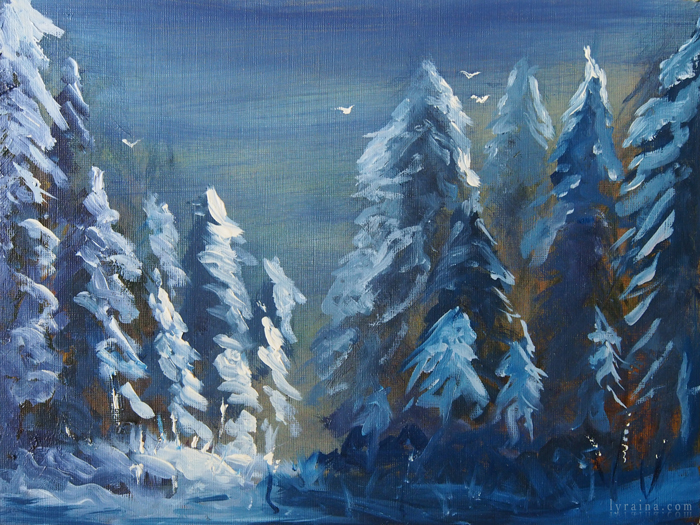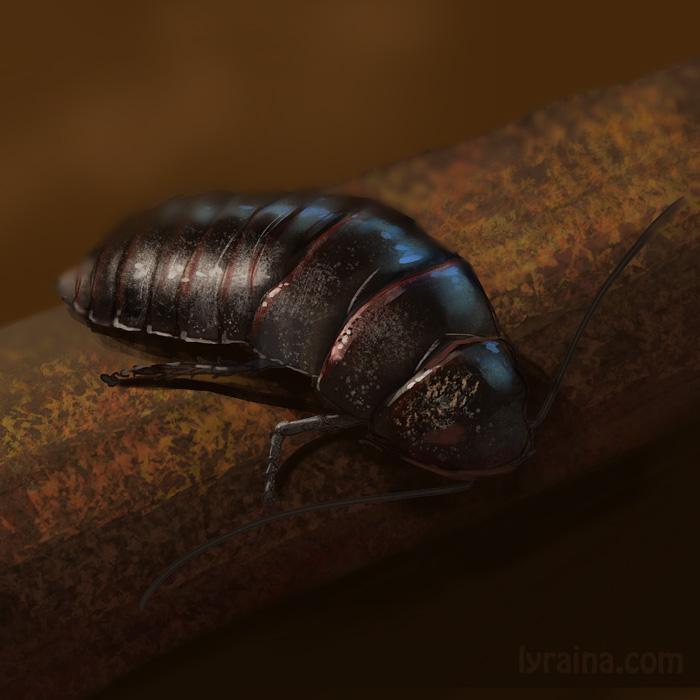05-16-2014, 04:26 AM
Thank you Ursula <3
Samszym: Thanks!
Cyprinus: Glad you like the skintones. I always struggle so much with those! I think it's not always a matter of working 'harder'... most important is working 'smart'... so if you don't have as much time, just try to be really focused when you do your work :)
Please excuse me for just dumping my stuff without visiting sketchbooks in return, I've not been feeling too well those last days but hope I'll get to it this weekend.
Gurney
Reverse Atmospheric Perspective
- General: Warm colors advance, cool colors recede
- Sometimes this gets reversed:
- moist vapor or dust in the air near the sun, scatter sunlight, orange glare
- very rare -> feels strange
- Albert Bierstadt etc
Golden Hour
- sun is low -> travels through more atmosphere than usual
- sky above = more blue (shadows as well)
- remaining sunlight = weaker, more orange/red
Sunset
- more moisture/dust = more red/yellow clouds
- antisolar point = directly opposite the sun, followed by a gray layer after sunset (cast shadow of earth)
- mornings are often more pink because there's less dust in the air
- higher clouds are whiter than lower clouds
- ground silhouette is colored, not black as in photographs
Fog, Mist, Smoke, Dust
- contrast drops off quickly (see atmospheric perspective)
- no direct light source, but light kind of from everywhere
- play with different color schemes, light situations (light above fog etc) for interesting results
Rainbows
- full of symbolism in different cultures
- red, orange, yellow, green, blue, indigo, violet
- antilsolar point is at center of rainbow -> shadows point there!
- distance to viewer irrelevant (it's all about the relative angle)
- rainbow always a bit lighter in value than surroundings
Skyholes and foliage
- trees almost never form a completely solid silhouette
- small skyholes can be darker than the background(sky) behind because small (not neccessarily visible) branches etc block some light
- how transparent, dark, jagged etc a tree is depends on season and species
- try to paint variety
Sunbeams and Shadowbeams
1. clouds, foliage, architecture block light except for a few beams
2. air is dusty/foggy
3. viewing towards sun
--> columns of light can be visible against a darker background, mostly with uneven edges, thickness etc (depending on the aperture)
- the farther away the aperture, the softer the beam (like shadows)
- perspective makes the parallel sunrays converge towards the light source/sun
Dappled Light
- irregularly scattered spots of light, moving with the leaves
- size depends on height of canopy (high tree = larger, softer circles)
Cloud Shadows
- patches of light drift around
- use to lead the viewer's attention
- soft edges size and spacing of patches must match the visible clouds
- shadow area is darker and cooler, but less blue than on a clear day
- several ways to paint this, i.e. darkening down shadow areas at the end, or paint everything dark and later refine lighter parts
(still don't get trees)


master study

oil fail (actually painted the snow over a brown-ish painting of the same scene, which looked terrible)

photo studies


those subtle curves in arms always give me trouble

my baby

Samszym: Thanks!
Cyprinus: Glad you like the skintones. I always struggle so much with those! I think it's not always a matter of working 'harder'... most important is working 'smart'... so if you don't have as much time, just try to be really focused when you do your work :)
Please excuse me for just dumping my stuff without visiting sketchbooks in return, I've not been feeling too well those last days but hope I'll get to it this weekend.
Gurney
Reverse Atmospheric Perspective
- General: Warm colors advance, cool colors recede
- Sometimes this gets reversed:
- moist vapor or dust in the air near the sun, scatter sunlight, orange glare
- very rare -> feels strange
- Albert Bierstadt etc
Golden Hour
- sun is low -> travels through more atmosphere than usual
- sky above = more blue (shadows as well)
- remaining sunlight = weaker, more orange/red
Sunset
- more moisture/dust = more red/yellow clouds
- antisolar point = directly opposite the sun, followed by a gray layer after sunset (cast shadow of earth)
- mornings are often more pink because there's less dust in the air
- higher clouds are whiter than lower clouds
- ground silhouette is colored, not black as in photographs
Fog, Mist, Smoke, Dust
- contrast drops off quickly (see atmospheric perspective)
- no direct light source, but light kind of from everywhere
- play with different color schemes, light situations (light above fog etc) for interesting results
Rainbows
- full of symbolism in different cultures
- red, orange, yellow, green, blue, indigo, violet
- antilsolar point is at center of rainbow -> shadows point there!
- distance to viewer irrelevant (it's all about the relative angle)
- rainbow always a bit lighter in value than surroundings
Skyholes and foliage
- trees almost never form a completely solid silhouette
- small skyholes can be darker than the background(sky) behind because small (not neccessarily visible) branches etc block some light
- how transparent, dark, jagged etc a tree is depends on season and species
- try to paint variety
Sunbeams and Shadowbeams
1. clouds, foliage, architecture block light except for a few beams
2. air is dusty/foggy
3. viewing towards sun
--> columns of light can be visible against a darker background, mostly with uneven edges, thickness etc (depending on the aperture)
- the farther away the aperture, the softer the beam (like shadows)
- perspective makes the parallel sunrays converge towards the light source/sun
Dappled Light
- irregularly scattered spots of light, moving with the leaves
- size depends on height of canopy (high tree = larger, softer circles)
Cloud Shadows
- patches of light drift around
- use to lead the viewer's attention
- soft edges size and spacing of patches must match the visible clouds
- shadow area is darker and cooler, but less blue than on a clear day
- several ways to paint this, i.e. darkening down shadow areas at the end, or paint everything dark and later refine lighter parts
(still don't get trees)


master study

oil fail (actually painted the snow over a brown-ish painting of the same scene, which looked terrible)

photo studies


those subtle curves in arms always give me trouble

my baby








